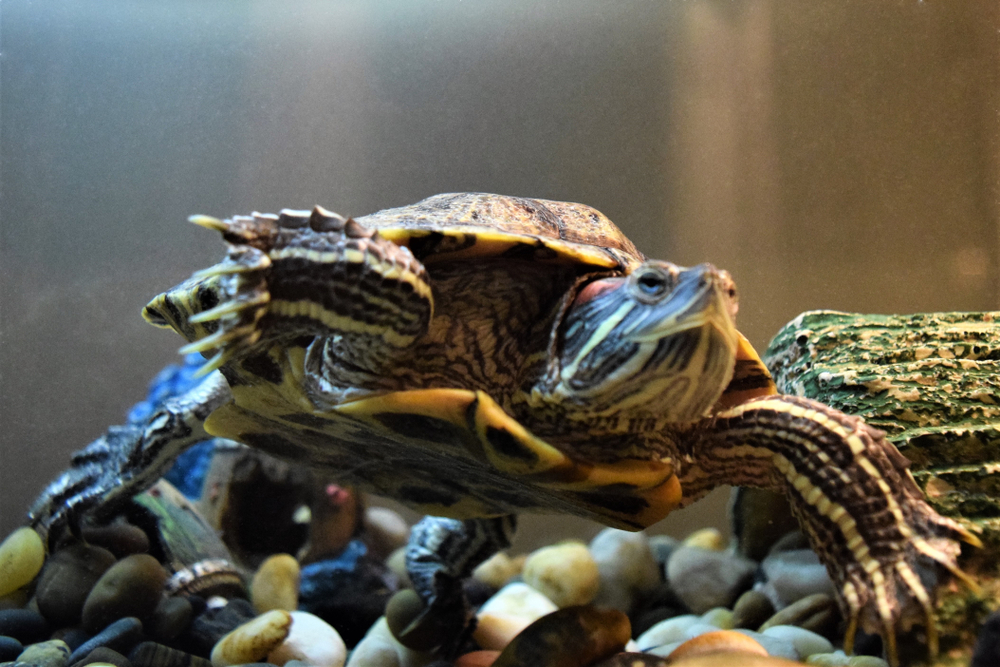African Sideneck Turtles (Pelusios castaneus) are fascinating pets known for their unique appearance and engaging behavior. Originating from the warm, freshwater habitats of West and Central Africa, these turtles are characterized by their ability to bend their necks sideways into their shells rather than pulling them directly back. Ensuring the well-being of African Sideneck Turtles involves understanding their specific care requirements and habitat needs.
Explore the comprehensive care guide for African Sideneck Turtles to provide these intriguing reptiles with a healthy and enriching environment. Proper care includes creating an optimal habitat, maintaining water quality, providing a balanced diet, and ensuring appropriate health care.
Setting Up the Ideal Habitat
Creating a suitable habitat for African Sideneck Turtles is crucial for their health and well-being. These turtles thrive in aquatic environments with ample space to swim and dry areas for basking. A spacious tank of at least 75 gallons is recommended for a single turtle, with additional space for each additional turtle.
Aquatic Environment:
- Water Quality: Clean, filtered water is essential. Use a powerful filtration system to keep the water clean and free from harmful bacteria. Regular water changes, about 25% weekly, are necessary to maintain optimal water quality.
- Temperature: Maintain water temperatures between 75°F and 82°F. Use a submersible aquarium heater to ensure consistent temperatures. Basking areas should have a temperature range of 85°F to 90°F, provided by a basking lamp.
- Substrate: Use a smooth, non-toxic substrate like river rocks or aquarium gravel to line the tank’s bottom. Avoid sharp or rough materials that could injure the turtles.
- Plants and Decorations: Incorporate live or artificial plants to provide hiding spots and enrich the environment. Ensure any decorations are turtle-safe and do not have sharp edges.
Basking and UVB Lighting:
- Basking Area: Create a dry basking area using rocks or floating platforms where turtles can fully emerge from the water. This area is essential for thermoregulation and preventing shell rot.
- UVB Lighting: Provide UVB lighting to simulate natural sunlight, which is crucial for vitamin D3 synthesis and calcium metabolism. Replace UVB bulbs every six months to ensure effectiveness.
Diet and Nutrition
African Sideneck Turtles are omnivorous, requiring a varied diet to meet their nutritional needs. A balanced diet includes:
- Protein: Offer a mix of commercial turtle pellets, earthworms, crickets, and occasional fish or shrimp. Protein should make up about 25% of their diet.
- Vegetables: Provide a variety of leafy greens, such as kale, dandelion greens, and collard greens. Vegetables should constitute around 50% of their diet.
- Fruits: Occasionally offer fruits like berries, apples, and melons as treats, making up no more than 10% of their diet.
- Calcium Supplements: Dust food with a calcium supplement once a week to ensure proper shell and bone health.
Health Care and Monitoring
Regular health monitoring is vital for detecting potential issues early. Key aspects include:
- Shell Health: Check for signs of shell rot, such as soft spots, discoloration, or foul odor. Maintain a clean habitat to prevent shell infections.
- Behavior: Observe for changes in behavior, such as lethargy, loss of appetite, or unusual swimming patterns, which could indicate health problems.
- Veterinary Care: Schedule annual check-ups with a reptile veterinarian. Seek immediate veterinary attention if you notice signs of illness or injury.
Handling and Interaction
African Sideneck Turtles can become accustomed to handling but should be approached with care. Limit handling to prevent stress and always support their body to avoid injury. Interacting with your turtle through feeding and gentle handling can help build trust and reduce stress.
Conclusion
In conclusion, caring for African Sideneck Turtles requires a commitment to providing a suitable habitat, balanced diet, and regular health monitoring. By understanding their specific needs and creating an enriching environment, you can ensure these unique turtles thrive and lead healthy, happy lives.








